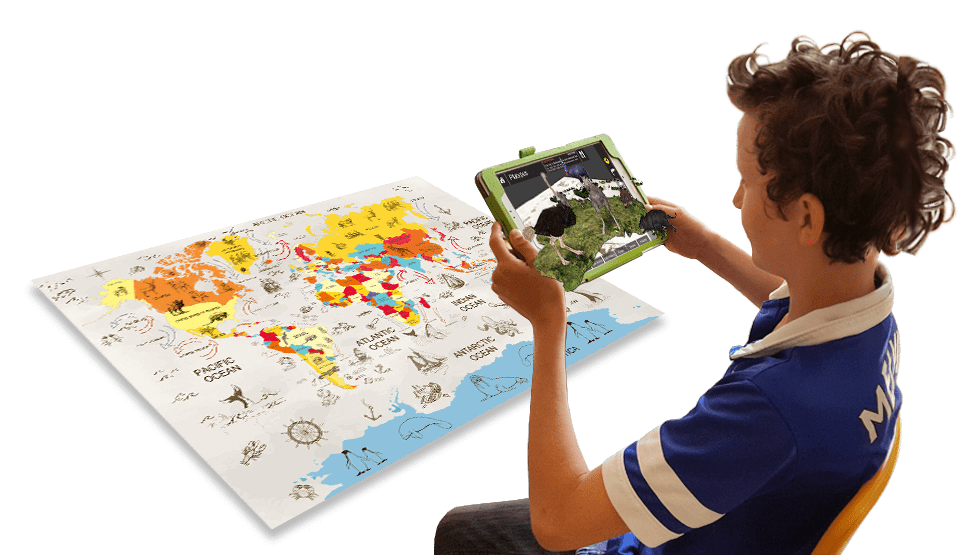In the current stage of the development of general secondary education, the introduction of a variety of innovative teaching methods is aimed at increasing the cognitive interest of the students. This leads to greater motivation in learning activities, and also allows students to better express themselves while improving their academic performance. This is of utmost value when working with children with special educational needs (SEN).
Augmented Reality (AR) technology enables pupils to study subjects in depth, analyse the consequences of world events, take part in archaeological expeditions, travel and much more. Most importantly, it allows pupils to do so in an entertaining way. AR gives way to experiences that pupils often do not have access to, especially children with SEN, as well as the COVID19 pandemic.

Pupils no longer want to read boring text and look at static, lifeless pictures from textbooks. They want interactivity, movement and innovation while they learn.
There are a plethora of huge advantages for pupils with Autism and delayed psychological development that use AR, including:
- An increased interest in the subject and topic of the lesson;
- It Motivates independent activity;
- It Activates various thinking processes;
- Dynamic visualization using AR activates various sensory channels such as vision, hearing, spatial perception. This contributes to better memorization of the studied material.
- The improvement of concentration on the object in question, as well as concentration in work. In the AR environment, the child is not distracted by external stimuli, which enables him or her to fully concentrate on the material being studied.
- Stimulates verbal communication, children start using new words in their speech more often, vocabulary becomes more active. This is effective especially in STEAM project activities, when working in small groups;
- Helps pupils to develop storytelling skills and facilitating the development of regular, every-day speech;
- Promotes learning foreign languages;
- Broadens children’s horizons;
- Contributes to the development of creativity;
- Enables them to study the subject in greater depth and stimulates research activities.
When teaching children with A and delayed psychological development, there may be some differences in the presentation and use of AR. This depends on the special features of the higher nervous system of children with SEN. For children with a delayed psychological development, it is recommended to use AR at the beginning of the lesson in order to focus the children’s attention on the topic at hand right from the get-go.
For children with Autism, it is important to present the material in a strict sequence, introducing the topic and all the stages of work in the lesson in advance – in which case it is better to leave the work with AR for the final stage of the lesson. Often, children with developmental disabilities have impaired spatial thinking and perception. Fortunately, AR helps to overcome this problem, improving learning in the lesson.
Students with SEN tend to be positive and interested in using AR tools in the classroom. Noted benefits of AR for those with SEN include:
- The contribution to a more pleasant atmosphere in the classroom;
- Makes lessons more engaging;
- Allows children to play and interact in different ways by inventing their own rules, thus enabling creativity and independence;
- Facilitates socialization of children with SEN, as well as the acquisition of communication skills with support from the teacher;
- Helps in mastering material in distance and non-formal learning;
- AR helps increase a student’s confidence in the classroom
Support for inclusive education by exposing students to AR technology contributes to the implementation of new methodological developments; mainly though the organization and content of educational activities in inclusive practice. Augmented Reality helps educators to diversify their lessons and allows students better understand and learn from them. The transfer of experiences and pictures through advanced AR technology is increasingly improving the educational process, and is subsequently setting up a bright future for SEN education.
By Ms. Olena Kovalova
Special Education Teacher
Economic and Humanitarian Lyceum №8 by the name of Vasil Stus, Ukraine

